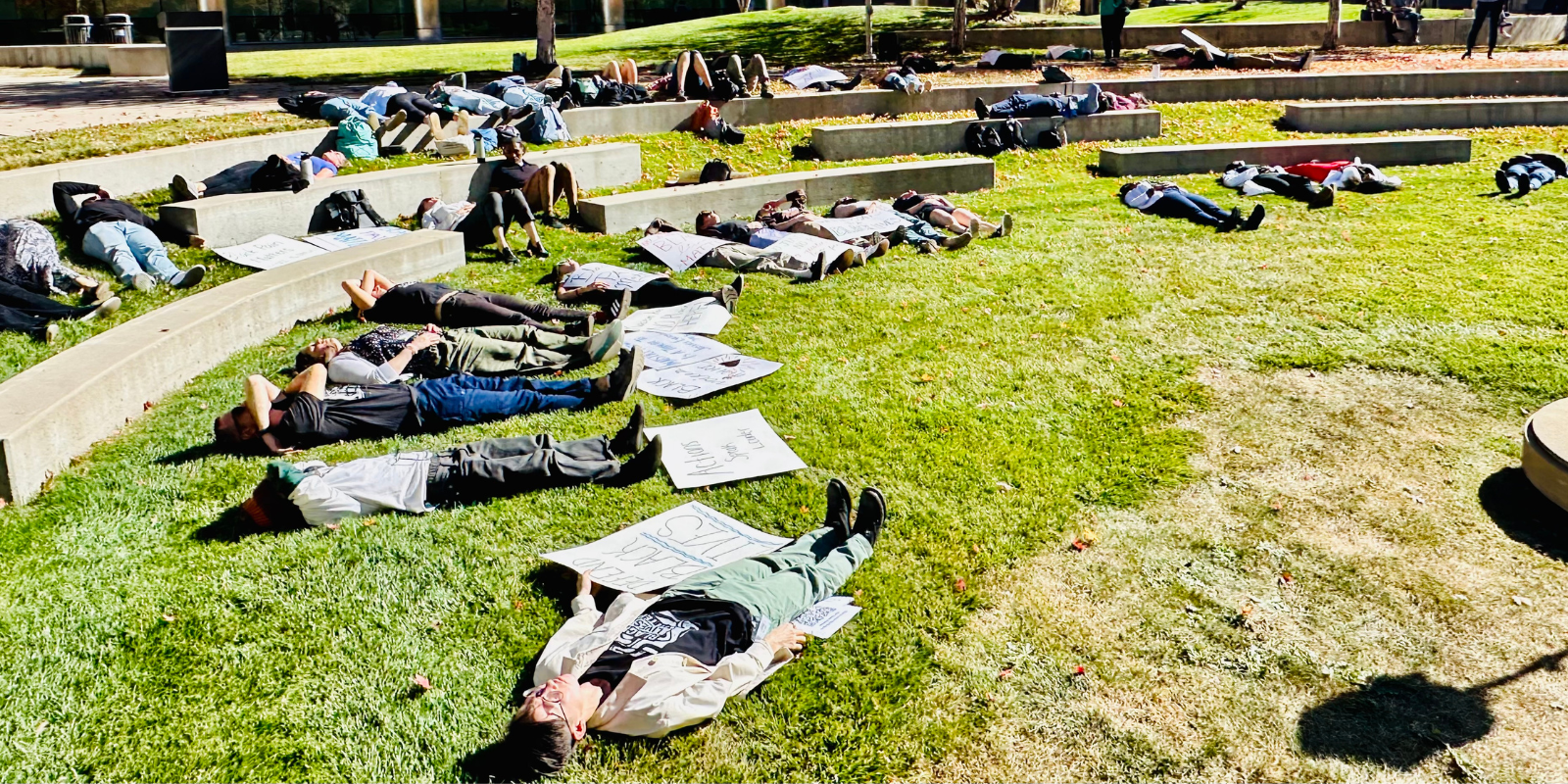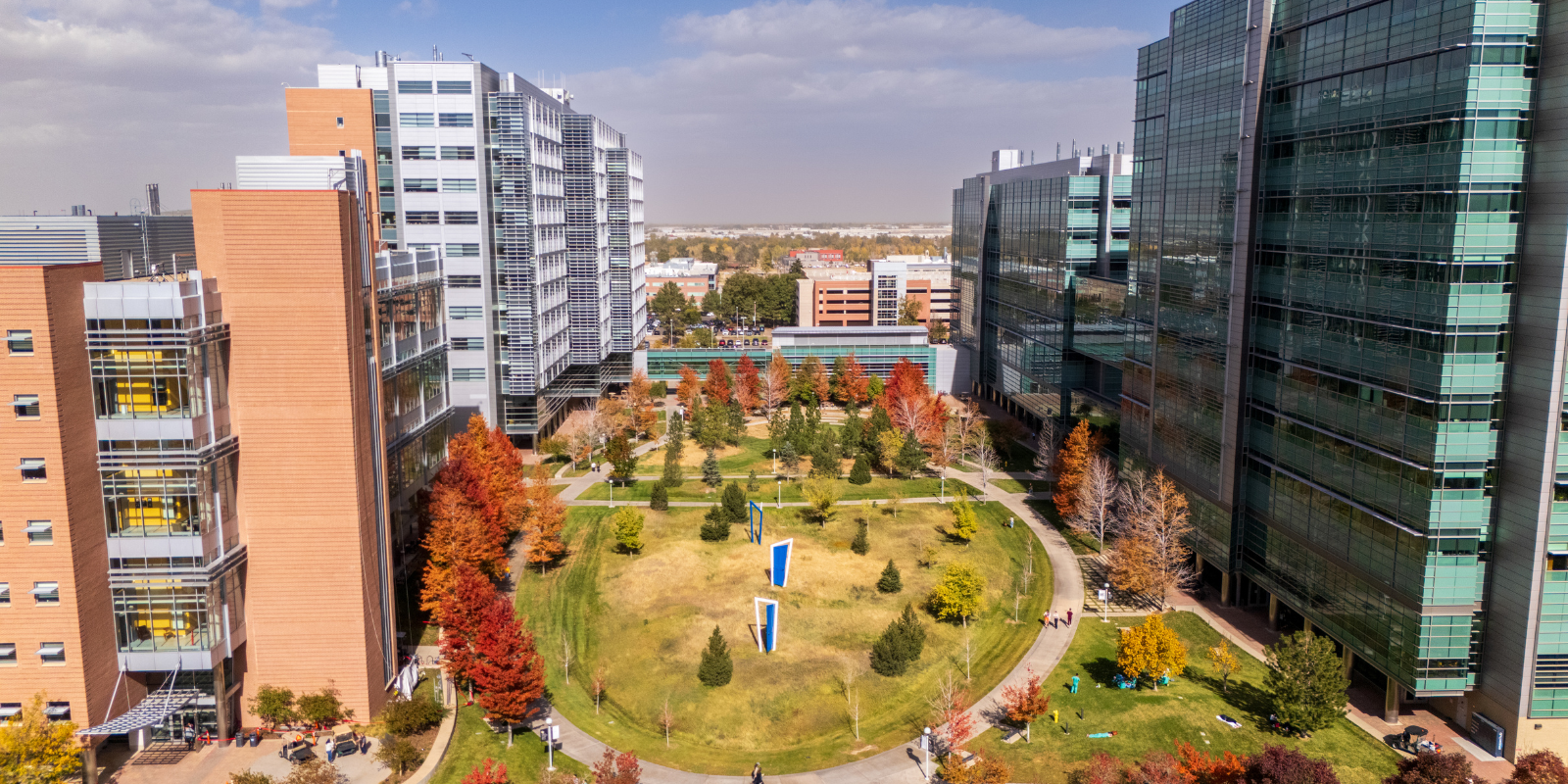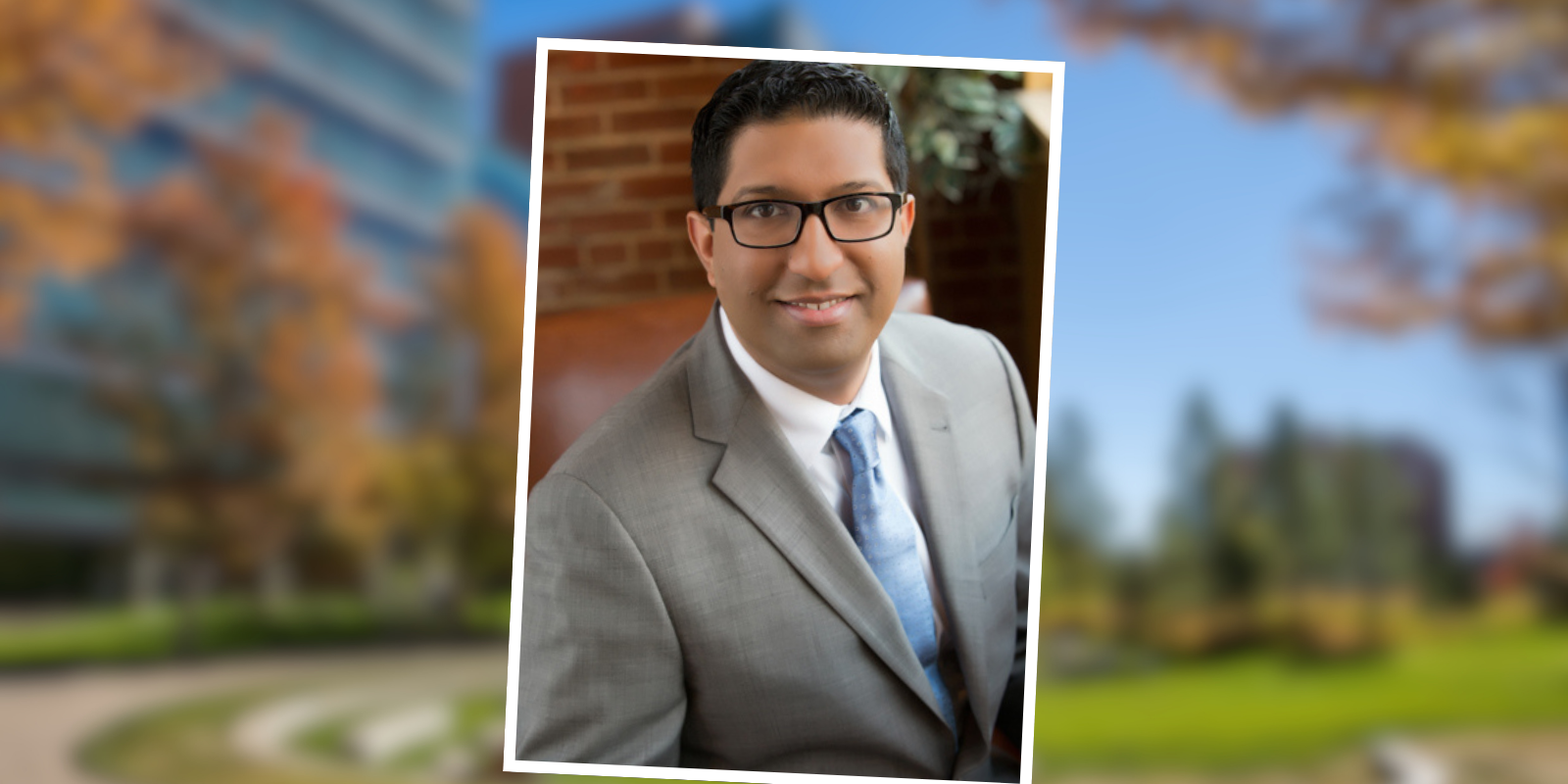For eight minutes and 46 seconds on October 28, a crowd of nearly 45 people at the University of Colorado Anschutz Medical Campus remained silent as they lay on the outdoor steps of the campus’ Research Quad. Handmade signs lay beside many of them, with phrases such as “Black voices matters,” “Racism has no place here,” and “Actions speak louder.”
The gathering, called a Die-In, is an annual event organized by the CU School of Medicine’s student chapter of White Coats for Black Lives, a national medical trainee organization that aims to dismantle racism and systems of oppression in medicine. There are chapters of White Coats for Black Lives across the United States, including at CU.
The national organization was formed following the die-in demonstrations that took place across the nation in late 2014 to protest racial injustice. A decade later, student chapters continue to host annual die-in demonstrations to raise awareness of inequities and injustices that impact Black people and people of color, highlighting the need for advocacy and change.
“It provides a sense of hope,” said White Coats for Black Lives Co-President Tamara Corley, a CU medical student, about the Die-In event. “We see the inequities in our community and with our patients. And as students, we sometimes feel that we don’t have the power to make change. This being a national organization really supports and boosts us to elevate those voices and continue the work.”
India Bonner, a CU medical student who also serves as co-president of the organization, said the Die-In demonstrations initially arose as a way to protest police violence. Over time, it has evolved to bring discussions of racism and health care to campus.
“What we’ve been able to do is bring a lot of Black health care providers from the community to talk about what they’re doing to stop racism,” Bonner said. “It brings this discussion to campus, but also empowers our allies to make changes.”

Community members hold up signs at the October 28, 2024, Die-In organized by the CU School of Medicine’s student chapter of White Coats for Black Lives.
‘We are doing this together’
The event began with community members gathering and creating posters, before the crowd fell silent to listen to speakers like Mak Callender, a student in CU’s Doctor of Physical Therapy program who serves as the campus liaison for CU’s chapter of White Coats for Black Lives.
“Black individuals are more likely to experience chronic illness, experience higher rates of infant mortality, and lower life expectancy,” Callender told the crowd. “The role of a Die-In is to remind us of the lives we’ve lost and the urgent need for change in our society and health care system. We are here to assert, beyond words, that Black lives really do matter, and that we are committed to demonstrating that in our actions and the way we treat our patients.”
Callender urged those in the crowd to work to dismantle systems of oppression, advocate for equitable access to health care, address social determinants of health, and ensure that institutions and the education system reflect the diversity and needs of the community.
“We are conveying a message to our communities, our leaders, our future patients, and to ourselves that we'll no longer stand for social injustices. I understand that sometimes issues around racial injustice, access to resources, and equity can feel too large for individual action, but we are doing this together,” she said. “Together, we'll work toward a future where every life is valued and where our health care system actually serves all individuals with dignity and respect.”

Attendees held up signs as they listened to students in White Coats for Black Lives during the 2024 Die-In event.
Bridging health care gaps
The event’s keynote speaker was surgeon Kweku Hazel, MD, who shared his experiences of learning about health inequities and work to address gaps in care.
Hazel, an assistant professor of surgery in the CU School of Medicine, immigrated to the United States from Ghana, in West Africa, as a teenager. When he lived in Texas, he recalled, he would frequently be searched while shopping or stopped by law enforcement officers for no cause. “But health inequity really was something I hadn’t been exposed to,” he said.
While attending medical school in Texas, Hazel searched for Black barbershops to get a haircut. He discovered the closest shops were all concentrated in one area, far away from the academic campus he was living near.
“Driving from where I lived all the way to the other side of town was probably some of the starkest disparities I saw here in the United States,” he said. “Moving to the other side of town, watching all the resources kind of get swallowed up and just disappear, and then crossing the railroad and seeing that really exacerbated on the other side, was truly an awakening.”
As he continued to visit these barbershops, he began having conversations with employees and customers, learning about their health issues.
“Engaging with these barbershop customers and owners is how I was able to learn about health inequities in the United States. We had studied some of it in school, but there was nothing like actually hearing their stories,” he said.
He wanted other health professionals and trainees to experience what he had, but he knew a barrier was that some community members distrusted the academic center. Determined, he began asking both parties if they’d be interested in meeting together. Ultimately, he was successful, getting a group of medical students, nurses, and other health care professionals to visit different barber shops in the area.
“At a certain point, people were coming to barber shops just to see and be able to experience, hear, and teach young physicians and young nurses about their experiences, with the hope of getting better health care for themselves and their children for generations to come,” he said. “This program continues to this day.”
Addressing health inequities that face communities will take the involvement of all people, which is why it is important for health care professionals to design health care interventions — whether it be clinical care or research — that involve marginalized populations who have historically not been included or considered, he explained. It is this type of health equity work that Hazel continues to do at CU, whether it be through his research or through addressing COVID-19 health disparities.
“The biggest pushback I get to this kind of work is that folks think it is just for the benefit of one community,” he said. “This is for all of us. This is for every single person. If you design a health care system that only favors the dominant culture, you are going to have a lot of people fall through cracks — and those cracks are what we are dealing with today.”

Community members lying on the grass at the CU Anschutz Medical Campus on October 28, 2024, as part of the Die-In event.
The need for allies
Toward the end of the event, the crowd of attendees silently laid down in the grass for eight minutes and 46 seconds in recognition of George Floyd’s death.
“We invite you to take this time to reflect on the lives lost to racial injustice, on the ways that racial and social injustice permeate our justice and health care systems, and the role that you play as we strive towards collective liberation,” Bonner told the crowd beforehand.
For students like Callender, being in CU’s chapter of White Coats for Black Lives has helped her feel less alone, she said.
“Sometimes, a lot of the weight when it comes to fixing structural racism, especially in health care, falls on our Black and brown providers. It’s a lot to carry that weight and mental load all on our own,” Callender said. “I think we need to do a lot more events like this to help make sure our allies know how to help us and how to advocate for our communities.”
Co-President Corley agrees on the importance of empowering allies. According to a 2023 report from the Association of American Medical Colleges, only 5.7% of physicians in the United States identified as Black or African American. Given the low percentage, Corley said it is “a huge ask for those 5% to make the changes that need to happen in our society,” underscoring the need for allies in addressing health disparities and inequities.
“Any sort of activism, spreading of the word, breaking down barriers for brown and Black persons to be able to elevate themselves to positions of power and join the ranks of medical providers … that’s how the change is going to happen,” Corley said. “This is a really great way to unite our community and support allyship.”



